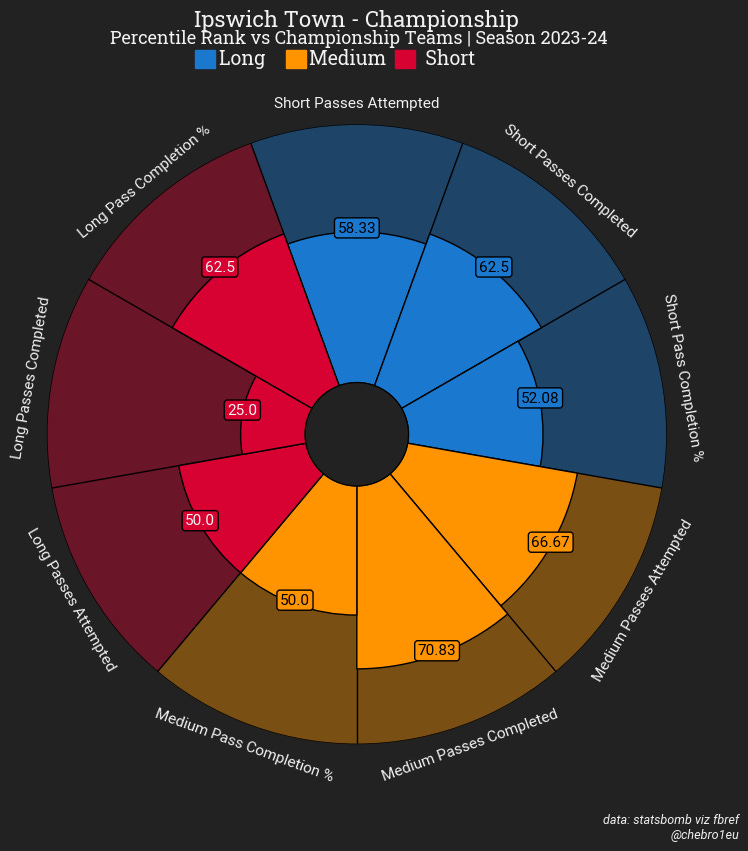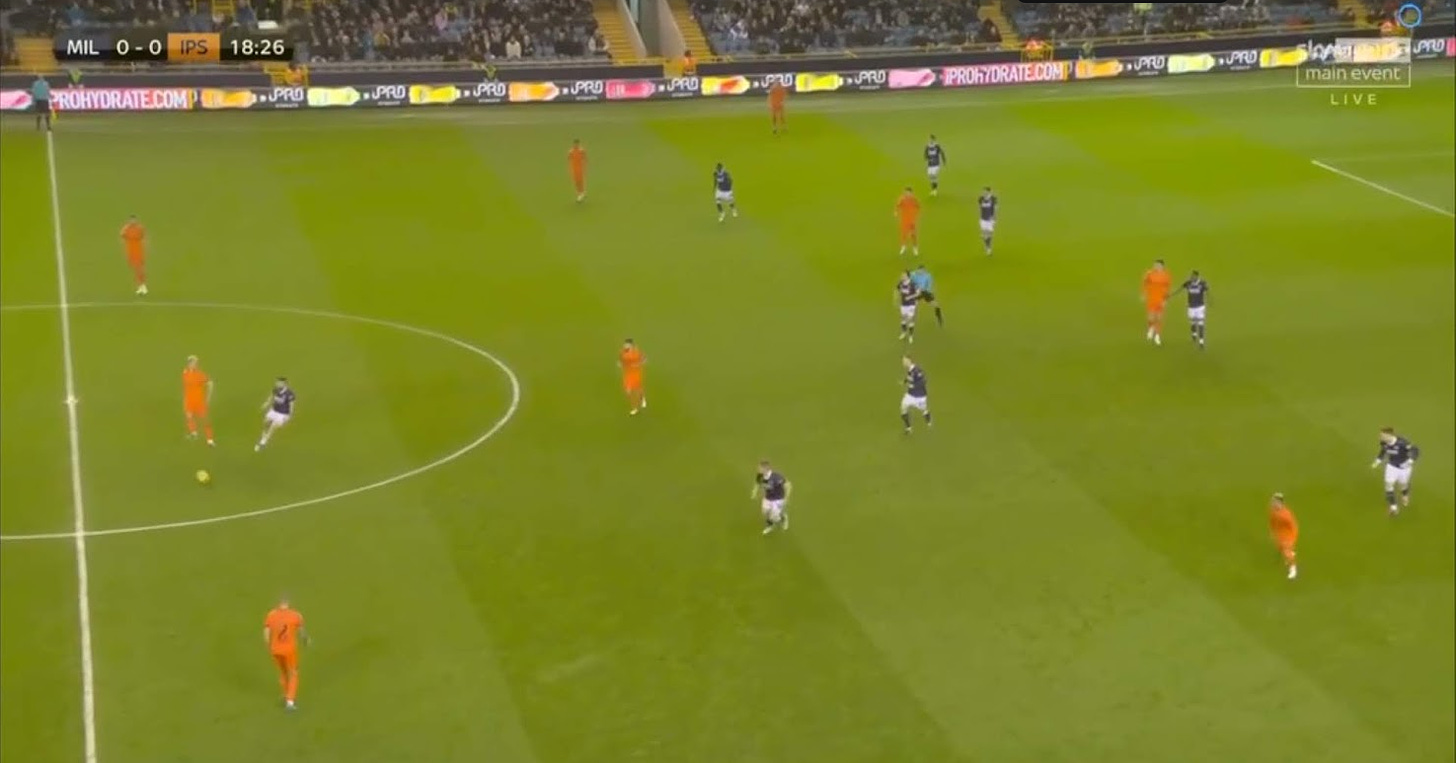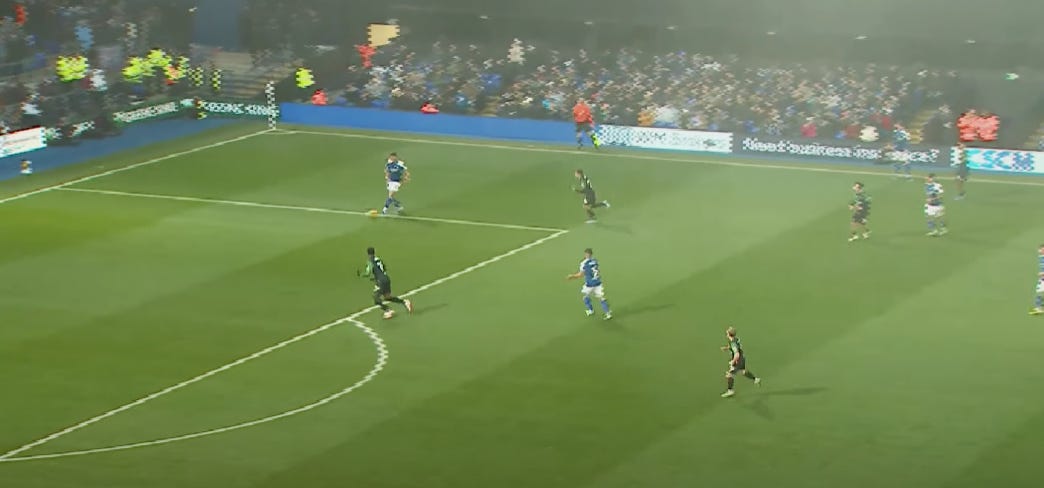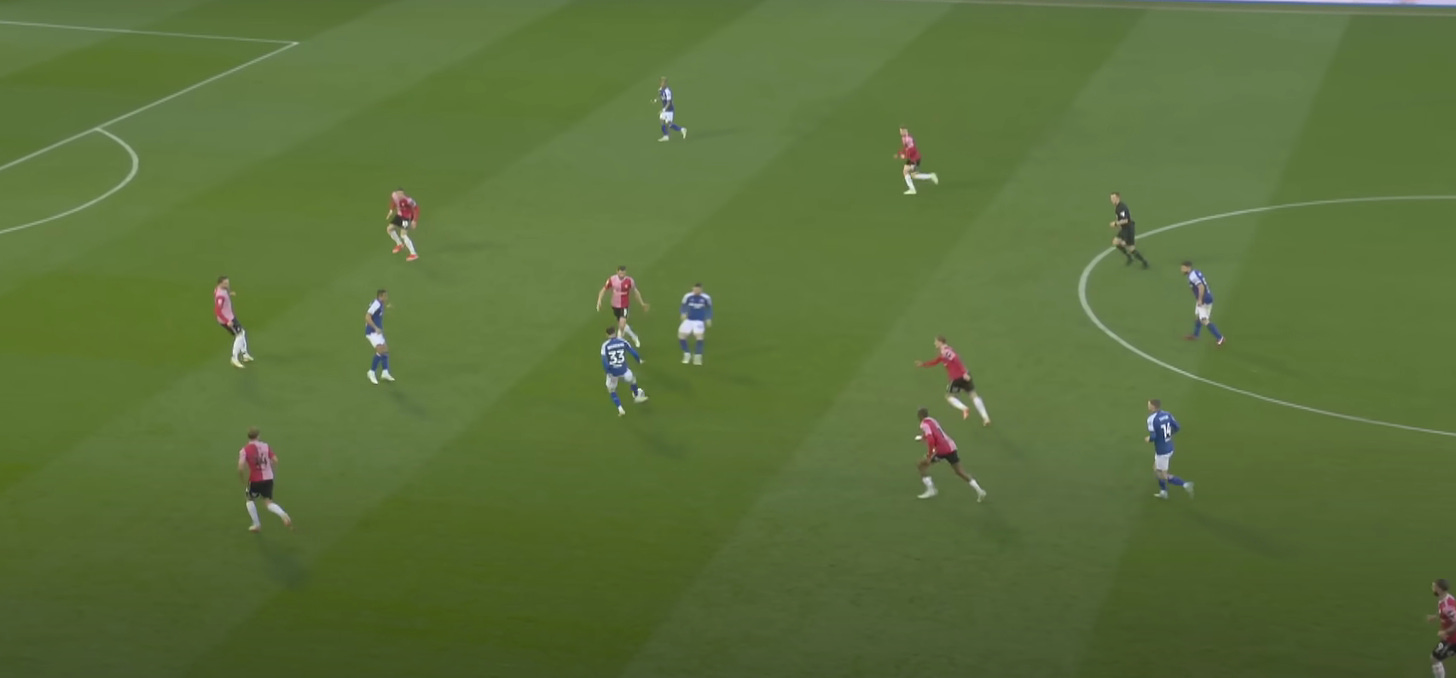The Remarkable Rise of Ipswich Town
The Suffolk side have had two impressive seasons, with only Manchester City picking up more points than Kieran McKenna's men in the English top divisions. This is how they achieved it.
Ipswich Town have had two immense seasons. After being relegated from the Premier League in 2002, they had a turbulent time in the Championship before being relegated again to League One at the end of the 2018-19 season. Ipswich are a team with rich history and extremely passionate fans.
After a takeover of the club in 2021 the club saw a slow upturn in form but were unable to replicate this for long periods leading to an underwhelming performance till January. This led to the sacking of Paul Cook and on came in the relatively inexperienced Kieran McKenna.
The club needed a change in direction, a better environment but more importantly an individual who could take the club from Suffolk back to their glory days. McKenna has responded emphatically getting back to back promotions completely overachieving throwing all norms into the trash can.
Principles of Play
As Jose Mourinho very famously said, you have, “One thing is tactical systems, another thing is principles of play. Principles of play have to be permanent. All the good teams they defend compact... It’s just a basic principle; you have to defend compact.”
Now what does this mean? Basically what Jose is trying to say here is you can have a defined tactical system of playing with 5 defenders or 4 defenders. However, there are some non negotiables that a team must have. The principles of how you keep the ball, what you do when you don’t have the ball and so on and so forth.
“A top team has to be complete in the four moments of the game. Possession, non-possession, defensive transition, attacking transition. You can be an attacking team, you can be a less attacking team, you have to be good in every moment. That’s a basic thing”- Jose Mourinho
So let us explore these facets one by one with an emphasis on Possession and Out Of Possession decisions that Ipswich executed from last season.
In Possession
When you think of a team that gets 90+ points in a Championship season, you would think of a team that keeps the ball passes it well. Holds on to it has higher possession than their opponents and passes the ball more than their opponents. Which is reflected in the data as well.
Now let us look at Ipswich.
Wait, the pie chart indicates that Ipswich are a team that does not have a defined playing style, neither do they prefer short passes in a possession based system nor long passes for quick transitional play.
What is happening here? Southampton and Leicester like “dominant” teams have a filled pie chart for the short and medium passes section indicating they are comfortable at keeping the ball in short regions and areas? Ipswich look extremely average in this regard.
Which makes them so very unique
Their uniqueness stems from how both facets of playing short and long are instilled in them. Secondly the ability to play short and long, displays their adaptability to change on a match to match level and more importantly during a match.
Quality not Quantity
Ipswich are not focused on retaining the ball and were beaten 19 times in the possession battle. They are very clever in how they operate with the ball and are highly adaptable. They can play out from the back and keep the ball if needed and they can go long and direct to their number 9.
Something that is very unique to them is how they progress out from the back and how their structure keeps changing when they face a smarter opposition. Below are two small animations that describe the build up structures Ipswich a keeper as the CCB or the RCB as the CCB in a situational back three.
A few things you might have noticed from the animations is how the number 5 bombards up and down the wings and the striker chooses to move to one of the wingers. Secondly you might or might not have noticed how the number 6 drops back to cover for the bombarding number 5.
Let us look at a few examples from last season to elaborate on this process from last season.

To see the most effective way their build up works against their team let us look at a goal against Coventry City. This goal surely must have popped in your timeline last year as one of the goals of the season.








Out of Possession
Before discussing Ipswich’s out of possession approach it is important to lay down the groundwork for some of the ideas teams introduce without the ball.
Space is a key aspect of football, the more space you have the more time you can have to pick out a good pass. There are individuals who have a tendency to create space for themselves by manipulation with the ball but those are treated separately. Now, try and think of one of the matches from when you were a kid. The person who had the ball would immediately be swarmed by a horde of players. This was the exact helter-skelter approach by the Dutch in the 1974 World Cup.
The problem with such an approach is by committing so many players in a single line you create space behind you and if the press is beaten you are completely exposed(ask any United fan from last season). Fundamentally, teams apply pressure on the ball in two mannerisms :
To Attack :
Teams like Liverpool, Manchester United, RB Leipzig try to generate turnovers in the opponent half. The idea is basically to apply pressure in a controlled manner to either force a mistake or an unwanted decision. Klopp’s Liverpool were quite remarkable at this suffocating teams completely. The simple thought process here is by winning the ball up high you are closer to the goal meaning you have shorter distances to travel to score.To Defend :
On the other end of the spectrum you have teams which use pressing in a more gentle manner, primarily to help the defense settle down into a more organized manner. Their intention is to delay to allow their defense to settle and prevent transitions. By using a few pressing traps teams force the ball into a particular region which they overload to win the ball back.
Now, how do Ipswich Town look without the ball?
Let us look at a bit of data before we break it down
A lower XG ratio indicates that they create more chances than they concede, lower PPDA(Passes per Defensive Actions) values indicate that they comfortably dispossess the opponent quickly and don’t allow them to make many passes before forced into a defensive action. It gives a lot of information about the intensity of team’s press. The high percentiles for tackles won in the final third, turnovers, shots and goals after turnovers are not surprising.
Ipswich are a team which uses their press to attack, to create chances.
Let’s take a closer look at how they do so.
Pressing Traps and Triggers
There are traditionally three responses to an extremely pressurized environment : Fight, Flee or the more uncommon Freeze. Let me try and explain how this translates into football.
Now, as a player there is a greater tendency on an individual level to minimize the number of mistakes you make on the pitch. You make lesser mistakes, you get noticed more, you get noticed more by coaches you start games more often than not.
The point I am trying to make here is as a player you always know what kinds of deficiencies you have and you try your best to mask them. If your left foot is weaker you tend to take more touches with your right foot. You move the ball away from your left foot for more assured touches.
Now, analysts and coaches sit together and notice this pattern with how you take your touches and decide to apply pressure in a particular direction to prevent you from taking your assured touches. So, they ask the player who will be pressing you to change the angle at which they apply pressure. To force you to take a touch with your left foot. Which causes discomfort to you which naturally puts your brain in a distressed state.
Which naturally leads to mistakes.
Now, teams can approach pressing with individual instructions like I described above, or approach it in a general way.
Take the basic example of trying to switch the ball from the one flank to another. With time and space the switch is accurate however when being pressed the decisions become hastier leading to mistakes.
Let us look at a few pressing triggers and traps that Ipswich have used last year.


This is one of the most common pressing traps used by McKenna’s side. Let us look at a few examples from last season.
Breaking down the video above frame by frame gives us a lot more information.
I want you to notice how Morsy steps out of the pivot and goes in knowing that Watford have 6 players on one side of the pitch meaning that their passing options can be cut out by smart pressing.


Here is another example from their game against Southampton. Notice how the first bit of pressing from the striker cuts out the passing lane so he is forced to go long



So, how does this bode for Ipswich Town?
They seem to have made the promotion jump a bit too quickly. The jump from Championship to the Premier League is massive, however if this article or if the Blues from Portman Road have proven anything it is that they are incredibly adaptable.
There are some patterns such as getting a staggering 32 points from losing positions which speaks to their mentality but at the same time will not be translated into the Premier League. For a team that has only lost two games at home in the last two seasons, Liverpool will be a tough game. Following that with arguably the toughest ground to visit in the league for a promoted side in a trip to the Ethiad. It may give a harsh reality check to life in the Premier League for Ipswich. Only time will tell how they fare.
For a more detailed breakdown of their players and what it takes to stay up in the league tune in next week!






















